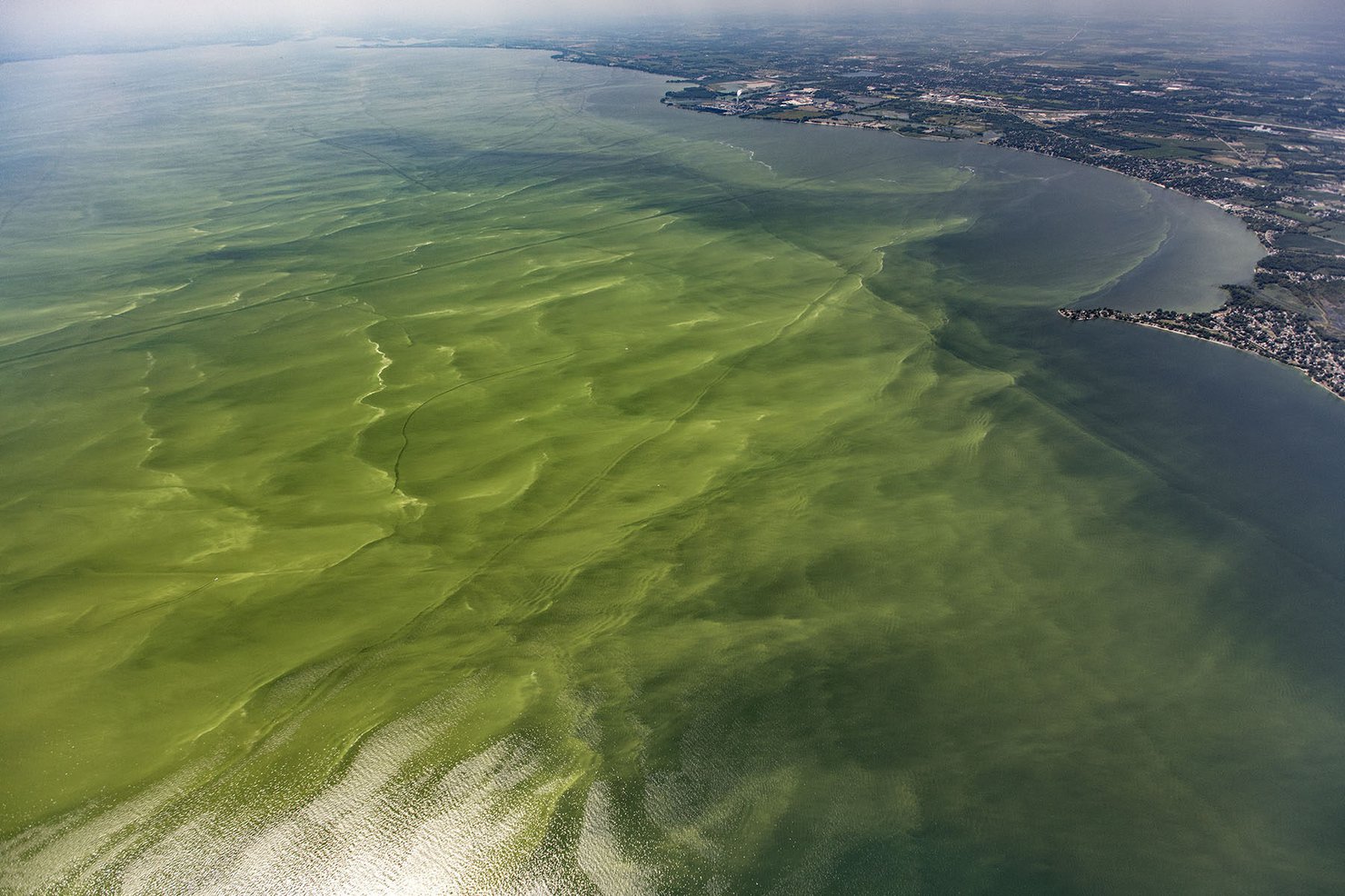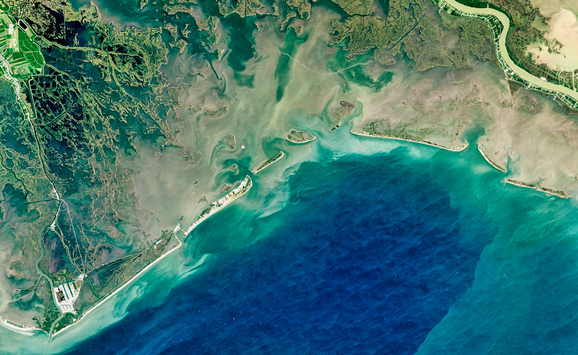With a little extra exposure to useful tools, willingness to take risks with new technologies, and exerted connections across disciplines, Earth scientists and water managers can gather and use Earth observation data to great effect in maintaining the quality and availability of water as a valuable natural resource.
New opportunities continue to arise in environmental measurement through remote sensing, satellite data, and other Earth observations. But up until now, few clear examples of consistent and operational use of remotely sensed data specifically in water policy have been documented. Nonetheless, some clear examples exist of remotely sensed data being used in decisionmaking, and social scientists with expertise in water resources can play an important role in accelerating the use of satellite data in water management.
Formal uptake of satellite data on water resources has been slow for policymakers and managers. In the United States, satellite data have been used by the National Weather Service (NWS) and the Federal Emergency Management Agency (FEMA), but the use of satellite data for managing water scarcity and water quality are less well documented. One example of satellite data leading to consequential decisions is the United States Drought Monitor (USDM), produced by the National Drought Mitigation Center. The USDM is a weekly map that indicates where drought is occurring, its severity, and its projected duration. The USDM informs decisions made within a variety of programs at the US Department of Agriculture and the Internal Revenue Service that are designed to mitigate the economic impacts of drought.
One of the most active water resource application areas for satellite data has been measurement of water quality. In addition to specific water quality parameters, remote sensing applications have been developed to measure the extent and severity of water pollution events such as harmful algal blooms, development of hypoxic and anoxic areas, and oil spills. For example, the state of Florida uses Earth observations to regulate coastal water pollution from nutrients under the Clean Water Act. Historically, in-situ water quality data were not of sufficient resolution to be used for this purpose, and it was impractical to enforce water quality standards using on-site measurements. Notably, Florida state law now specifies satellite monitoring in related regulations, with the specific provision, “Achievement of these criteria shall be assessed only by using satellite remote sensing data that are processed in a manner consistent with the derivation of the criteria.”
Another notable application is the Mapping Evapotranspiration with Internalized Calibration (METRIC) satellite-based image processing model, which can quantify evapotranspiration at the extraordinarily granular scale of individual farm fields. Results from a METRIC analysis were used as part of expert testimony in a US Supreme Court case, in which Montana alleged that Wyoming violated the Yellowstone River Compact by diverting and storing water from the Tongue River. In the testimony, an expert from Montana used the measured evapotranspiration rates to identify irrigated acreage in Wyoming, which in turn was used to estimate the quantity of water used for irrigation.
In spite of these cases that demonstrate how Earth observations have contributed to policy and decisionmaking, challenges continue to hinder the adoption of satellite data for water management at an operational level. A limitation of satellite data applications is that they may require further refinement before they are put to use in decision contexts with socioeconomic consequences. One common obstacle is that the spatial and temporal resolutions of the data may not match the needs of a water manager, because sensors on board existing satellites may not have been built with specific water resource management applications in mind. Many sensors have only been operating for a short period of time, while some decisions associated with water management may require longer data records with established normals. Likewise, concerns regarding the continuity of a specific satellite mission may discourage investments by water managers to accommodate long-term use of data from that satellite.

Issues of institutional inertia may also hamper adoption of satellite data. Anecdotally, many water managers do not have an incentive to incorporate new forms of data into their decisionmaking. Water managers face the risk of being blamed for negative societal outcomes from decisions using new data, whereas they would not be at fault if they had made their decision “by the books,” even if use of the new data would have yielded a less negative outcome.
But the opportunities associated with satellite data for water policy are clear. Satellites often allow for the measurement of hydrologic parameters at greater spatial resolution and coverage, higher temporal frequency, and lower latency, all at lower cost.
Here at Resources for the Future (RFF), the Consortium for the Valuation of Applications Benefits Linked with Earth Science (VALUABLES) works to quantify and communicate how the use of satellite information in decisions can improve outcomes for people and the environment. A cooperative agreement between RFF and the National Aeronautics and Space Administration (NASA), VALUABLES brings together economists, NASA scientists, remote sensing experts, members of the wider Earth science community, and decisionmakers.
My experience directing the VALUABLES consortium suggests that social scientists can help bring the value of satellite data to water management. This is because social scientists who study water resources generally understand how hydrologic information influences water management decisions and how these decisions influence socioeconomically meaningful outcomes. Thus, social scientists who collaborate with Earth scientists working on remote sensing applications for water can help inform the design of project outputs that fits the needs of policymakers.
A version of this text was previously published as a policy note in Volume 5, Issue 3 (July 2019) of the journal Water Economics and Policy.






